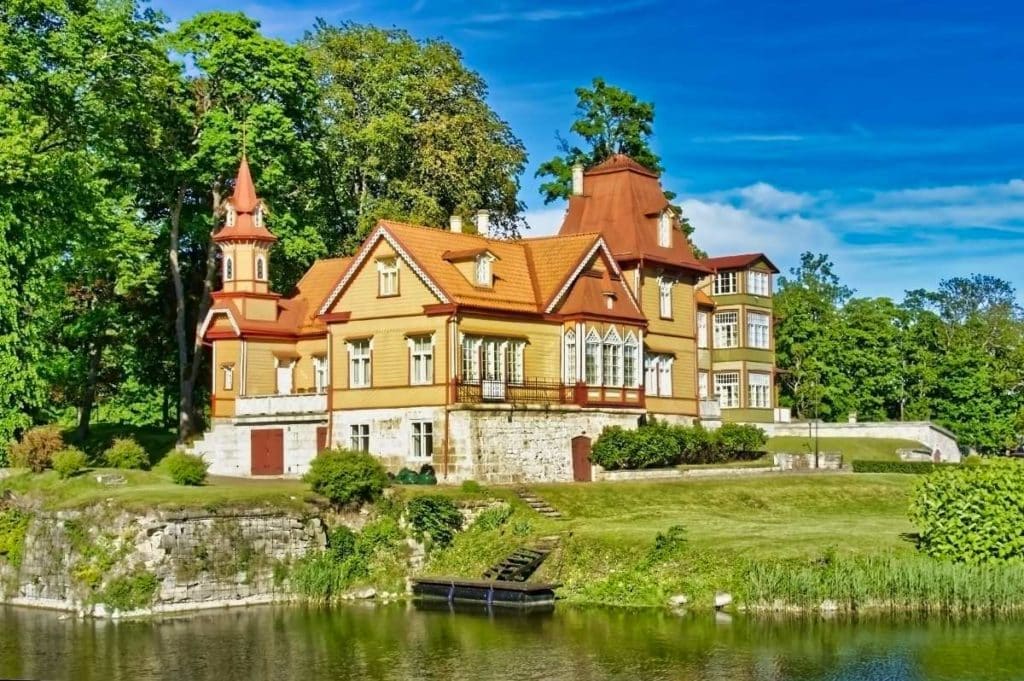Exactly 2222 Estonian islands are said to exist in the Baltic Sea. Many people do not know that Estonia has such a large number of islands. Today we would like to introduce one of them to you, more precisely the largest of them, namely Saaremaa, which is called Ösel in German and Swedish. Saaremaa Estonia with its 2672 km² is the fourth largest island in the Baltic Sea and almost three times larger than Germanys’s biggest island Rügen. The island is very well developed and therefore made for a relaxing vacation. It is located in the Moonsund, a group of islands west of the Estonian mainland, which also includes the islands Hiiumaa, Muhu and Vormsi. If you are interested in Estonian islands in general, just click here.
The history of the island
Saaremaa was inhabited by pagan settlers in the Middle Ages, but was then conquered by a missionary order in 1227 and later came under the control of the Teutonic Order (learn more about the Teutonic Order here in our article on Marienburg).
Swedes and Danes
Later Saaremaa was administered by a prince-bishop, who sold the island to the Danes. The Danes later had to hand over the island to the Swedes and Saaremaa flourished under them in the 17th century and was an important trading post.
Russian rule
In the Great Northern War, the island then came to Russia at the beginning of the 18th century. Under the vice-governor Balthasar Freiherr von Campenhausen, the island was modernized, and almost no stone was left unturned in the capital Kuressaare. As a trading post, the island lost more and more of its importance, but in the 19th century Saaremaa developed into a popular spa. The short episode of Estonian independence was cancelled out by its inclusion in the Soviet dominion.

Saaremaa today
After the fall of communism, however, the island, which now belongs to independent Estonia, flourished again. Many new hotels were built and especially guests from Estonia, Latvia and Finland like to spend their summer vacations here.
These are the most beautiful places on Saaremaa Estonia
The mostly flat island also has some cliffs like Panga Pank. The fascinating thing about Saaremaa is the combination of nature and man-made sights. Here you can see different species of seals, but also bears live on the island. You can make exciting discoveries in the capital Kuressaare (Arensburg). The bishop’s castle there is one of the most popular destinations on the island. But also windmills, lighthouses and a mystical meteorite crater are worth a vacation on Saarema. Here you can find out which places are worth a trip!
Kuressaare
Only 36,000 inhabitants live on Saaremaa. More than a third of them can call Kuressaare their home, the only town on the island. It is located on the southern coast of Saaremaa. The old town is very pretty, among other things you can admire the baroque town hall or stroll along the long Lossi Street, where you can also find the municipal theater and the 18th century Laurentius Church. The Orthodox counterpart to the Lutheran St. Lawrence’s Church is the Church of St. Nicholas, which was built at the behest of Catherine the Great.
Recreation and culture
The area west of the Old Town, where you can go bird watching, promises relaxation. Those interested in culture should pay a visit to the Aavik-Museum, where the linguist Johannes Aavik once lived, one of the forefathers of the modern Estonian language. By the way, the beautiful building in the picture is the chic Hotel Ekesparre*, where you can stay with a view of the castle.
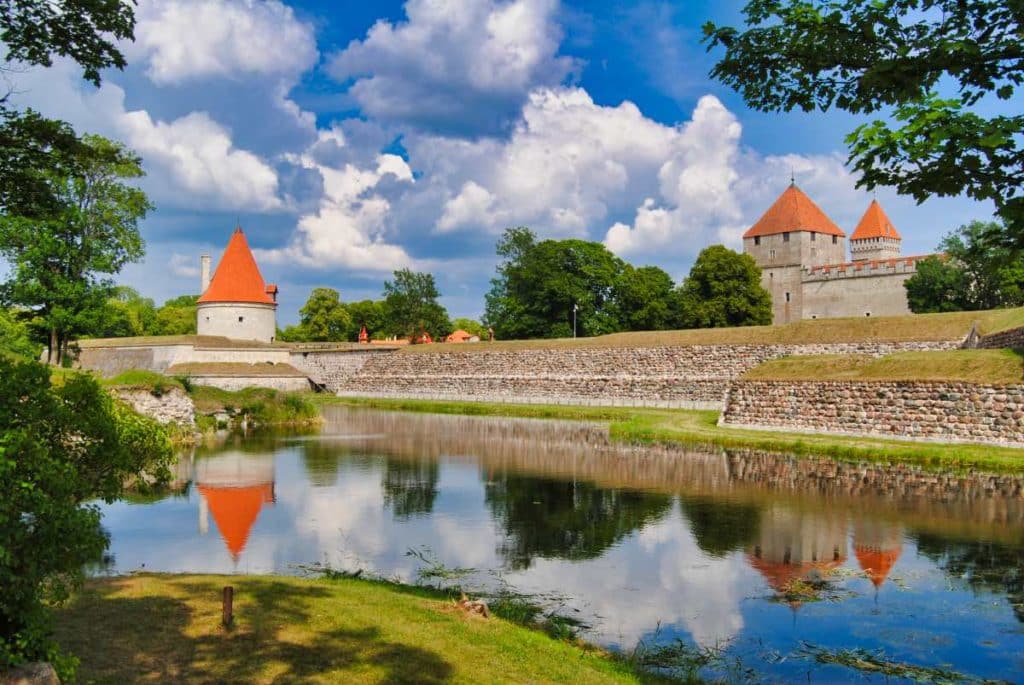
Bishop’s Castle
However, the undisputed landmark of Kuressaare and one of the most photogenic sights in the country is the medieval Bishop’s Castle. It was first mentioned in documents in the 14th century, but it is probably much older. Along with Trakai Castle in Lithuania, it is perhaps the best preserved medieval castle complex in the Baltic States. It is also known for its 29 meter high tower, the “Long Hermann”. The Bishop’s Castle has a special charm because it is still surrounded by a moat. In the past, the moat was supposed to keep intruders away, but today you can relax here.
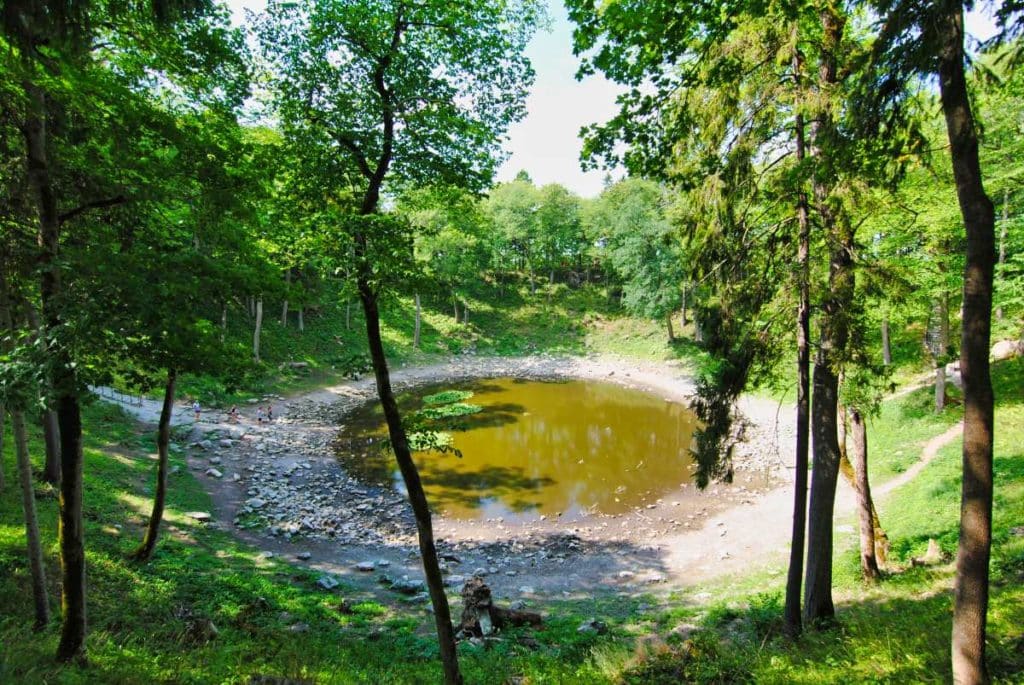
Kaali meteorite crater
In the heart of the island is one of the most unusual sights of the country. About 4000 years ago, a meteorite struck here, leaving a huge hole in the earth. This created a crater measuring about 50 meters, which today is filled with water and resembles a small lake. It is surrounded by a wall of earth, which underlines the dimensions of the meteorite impact. In addition, you will find other, somewhat smaller craters here. For a long time it was assumed that there was a volcano here, others even suspected ghosts behind the crater or claimed that the earth had swallowed a church here where two siblings had gotten married. The fact that it was a meteorite weighing up to 10,000 tons was not noticed until the 20th century.

Angla windmills
Historic windmills are a characteristic of the Estonian islands and can be found on other islets as well. In the past, there were several hundred windmills on Saaremma alone! Nowhere else can you find them so beautifully and photogenically gathered together as on the mill hill of Angla in the north of Saaremaa. Five mills still stand here, four of which are classic windmills and date back to the 19th century. A Dutch windmill, which is a bit higher, was added in 1927. In the neighboring Heritage Center you can learn about traditional milling.

Church in Karja
Just a stone’s throw from the windmills lies the small village of Karja. It is one of the oldest villages on the island and was long the seat of the German-Baltic noble family of the Sengbuschs. Their old manor house still stands here, but most tourists come here because of the small village church. It is an architectural peculiarity, as it has an unusual shape due to its high construction. The Gothic church was built in the 14th century and has survived the turmoil of the past unscathed. Therefore, inside you can still admire the fine stonework and fine frescoes with their many floral motifs. The church is also decorated with mysterious Christian and pagan symbols, such as a pentagram, which still puzzle researchers today.
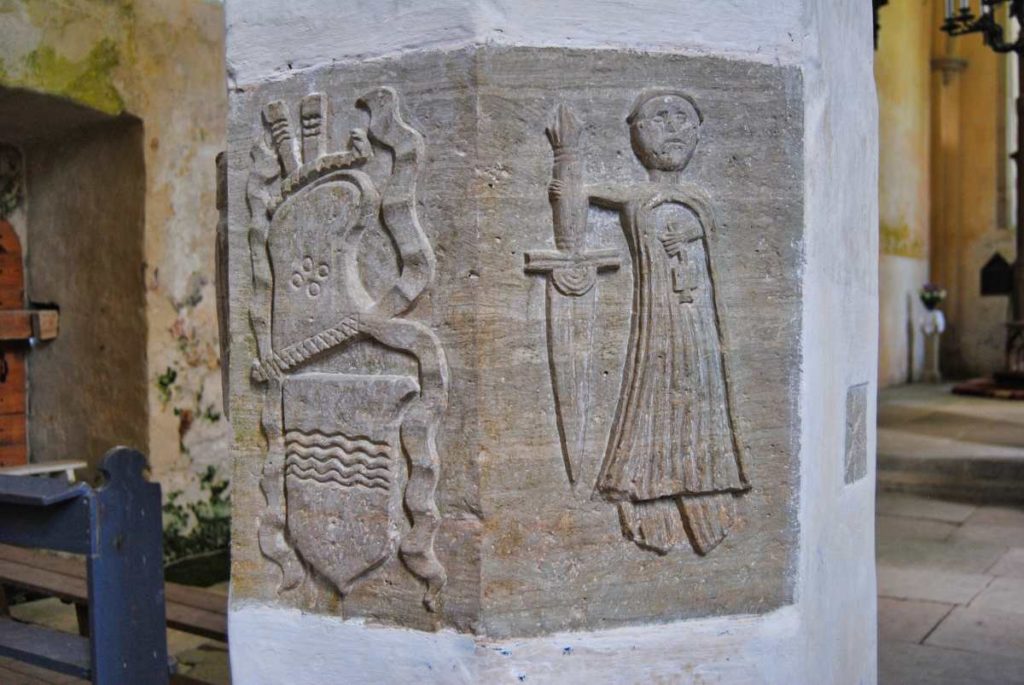

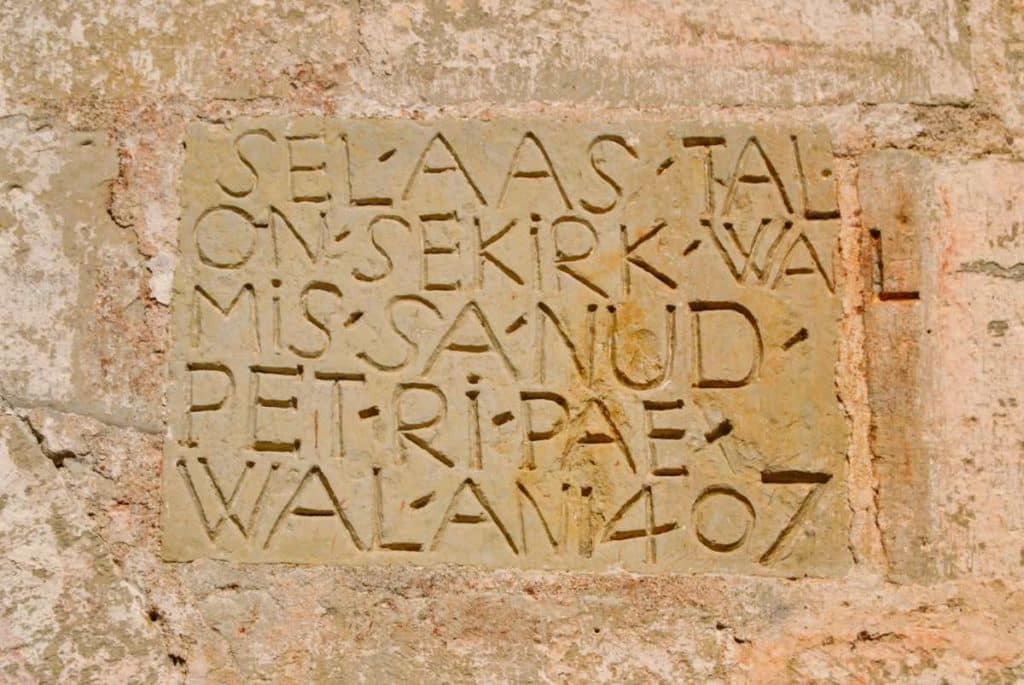
Church in Kaarma
North of Kuressaare, in the village of Kaarma-Kirikuküla, stands another exciting church. Its origins date back to the 13th century, but over time it was repeatedly rebuilt, giving it its current appearance with the church tower. Several works of art from the 15th century survived, including a number of frescoes, sculptures and the baptismal font. For Estonians, this is an important place, because in the two-nave church there are inscriptions, which may be the oldest testimony of the Estonian language. The neighboring rectory and school will give you an idea of the traditional way of life on the island.
Church in Pöide
And another village church has made it to our list of the most beautiful sights of Saaremaa. Pöide is a small hamlet in the east of the island. Here once stood a castle of the Teutonic Order, but it was destroyed already in the 14th century. By then, the massive Gothic Church of St. Mary stood here, itself somewhat reminiscent of a castle. It is distinguished by its massive tower and although Pöide has less than 30 inhabitants today, the few people living here can be proud of being able to call the largest church on the island their own. By the way, the German writer Walter Flex was killed in Pöide during the First World War. At first he was buried here, but the Nazis had him exhumed and his body transferred to Königsberg (now Kaliningrad).
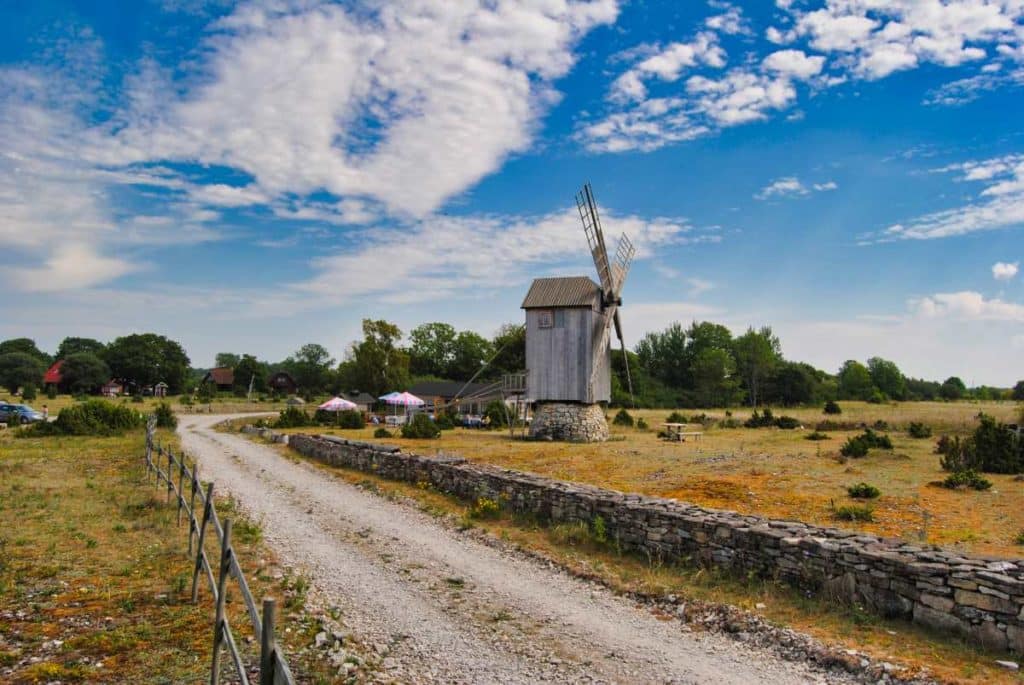
Sõrve Peninsula
From the air, Saaremaa Estonia looks a bit like a fat fish with a narrow tail fin. This “fin” is the Sõrve peninsula, one of the most beautiful destinations on the island. Sõrve is a paradise for hikers, water lovers and windsurfers.

One of the most beautiful lighthouses on the island
The landmark of the peninsula is the black and white lighthouse in the south of the peninsula. It dates in its current form from 1960, but already from the 17th century a beacon here showed the ships their way.
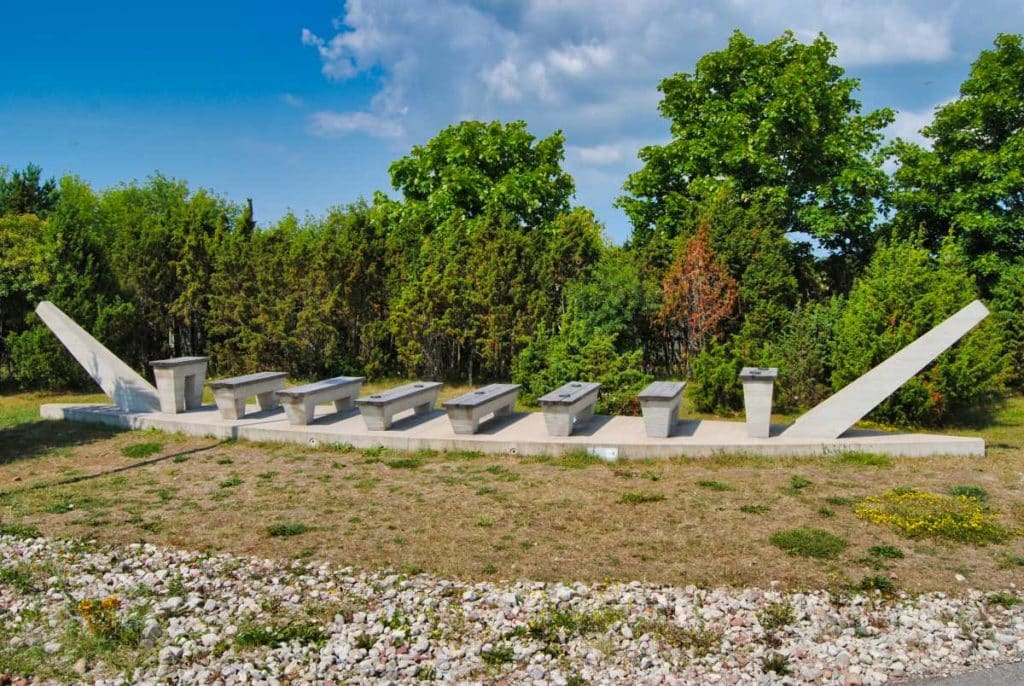
Mysterious ship graves
If lighthouses were installed here earlier, Sõrve might be poorer by another attraction, some might think. This is because the wrecks of two Viking ships were discovered here in 2008 and 2012. Archaeologists date the two wrecks to the early Middle Ages. Only remains of the wooden ships could be recovered, but the skeletons of the crew, their knives and grinding and playing stones were in much better condition. What makes this site special is that it was not a shipwreck, but a boat grave where the men were buried. The boat graves here are unique because usually much fewer people were buried in boat graves like this. In addition, they were simply lying in the sediment and were not buried on a mound as was usually the case with the Vikings.
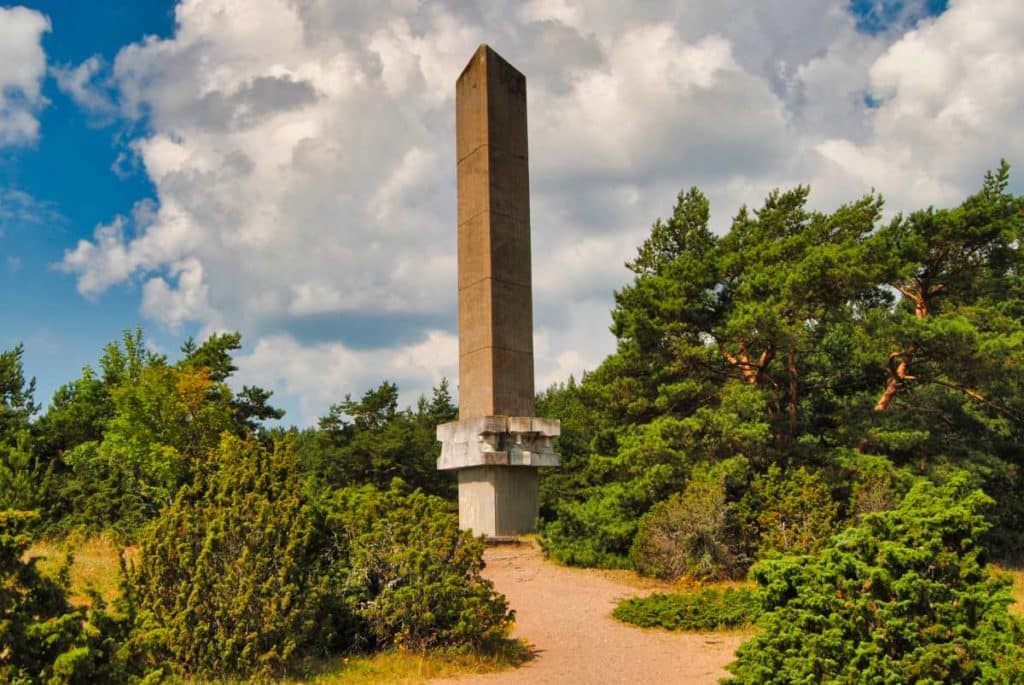
A dark past
However, Sõrve is also known because of the battles that took place here during the Second World War. Both during the German invasion of the Soviet Union and the reconquest of the island in 1944/1945, several thousand soldiers fell here. In the Battle of Tehumardi alone, 750 people died in one night. An impressive Soviet memorial still commemorates the event. After the war, the peninsula continued to be used for military purposes. Many of the bunkers and rocket launch pads are still well preserved and visitors interested in military history will find many places to visit. The memorial on the picture looks like a sword and reminds of the Battle of Tehumardi in the middle of nature.
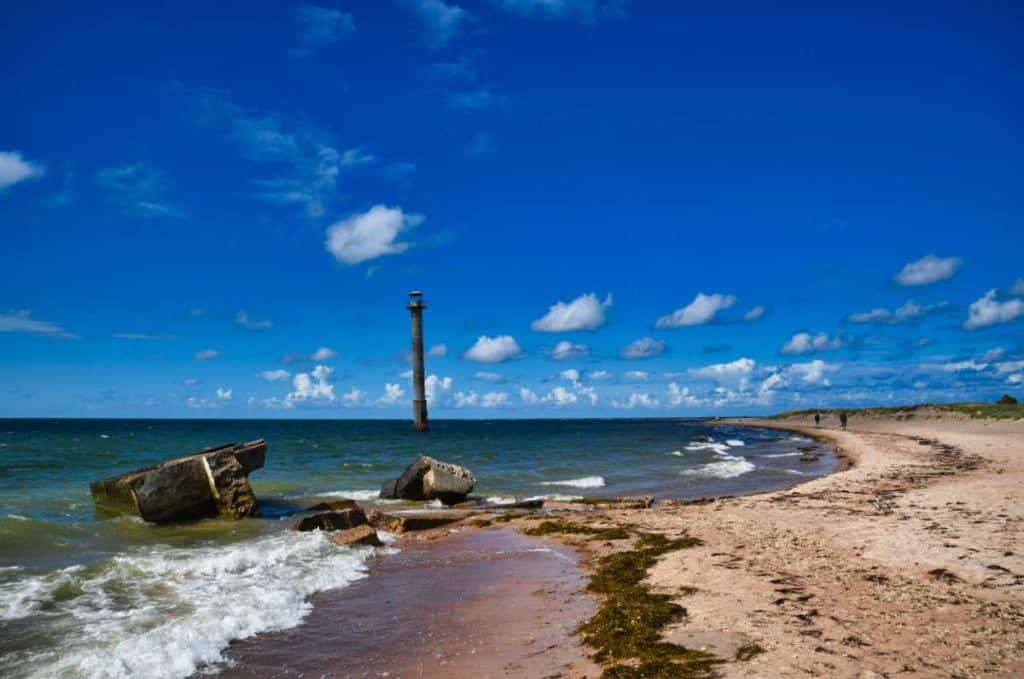
Vilsandi National Park
On the western coast of Saaremaa a national park has been established, which extends over 150 small islands and parts of the mainland. Wild orchids and junipers bloom here, but with a bit of luck you will also come across fossilized corals during your explorations, and nowhere else on the island can you experience such beautiful sunsets as in this natural paradise. In addition, the national park counts over 250 different bird species, including several exotic duck and seagull species. In the information center of the national park you can learn about the fossils and natural history of the region. By the way, the roots of the national park go back to 1910, when the Vaika Bird Sanctuary was established here, the first nature reserve in the Baltic States.
How to get to Saaremaa?
To Saaremaa you have to take the ferry from the mainland. Timetables and tickets can be found here. But be careful, the ferries to Saaremaa actually go to the island of Muhu! The ships leave from the mainland port Virtsu and arrive in Kuivastu on Muhu. Then the trip goes across the island of Muhu and a dam that connects Muhu and Saaremaa.
- Altheide, Thorsten (Author)
- Stefanie Bisping (Author)
No products found.
No products found.
We hope you enjoyed our trip to Saaremaa Estonia. What is your favorite place? Feel free to let us know and write us a comment!


